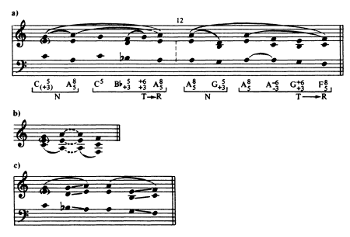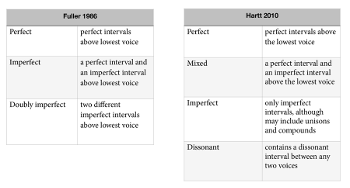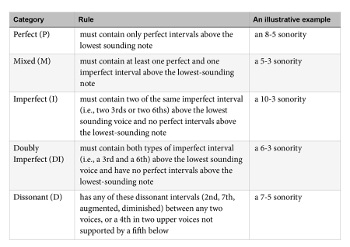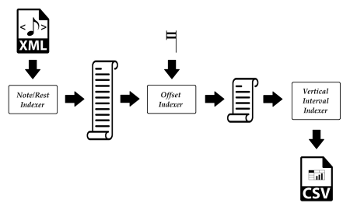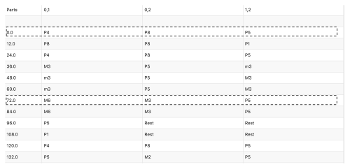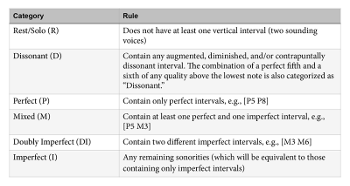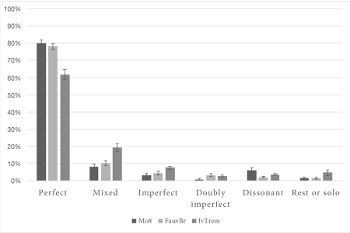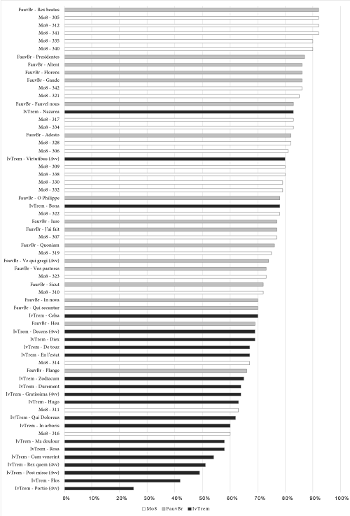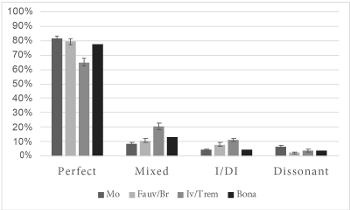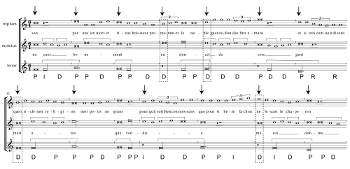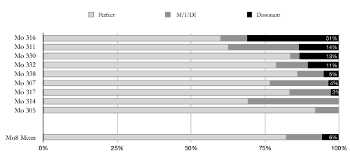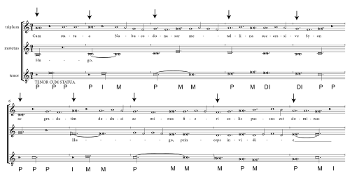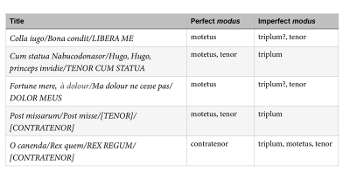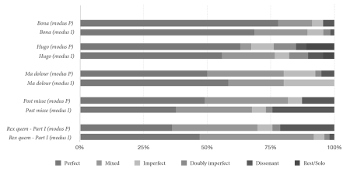EXAMPLE TESTING
Example 1. Voice-reduction graph of Machaut’s Bone pastor/Bone pastor/BONE PASTOR from Fuller 1986, 62
(click to enlarge)
Example 2. Categorization of sonorities according to Fuller 1986 and Hartt 2010
(click to enlarge)
Example 3. Rules for our categorizations of sonorities that expands on Fuller 1986 and Hartt 2010
(click to enlarge)
Example 4. (a) Fuller: — / Hartt: Imperfect (a-c-c’); (b) Fuller: Imperfect / Hartt: Mixed (a-a’-c’); (c) Fuller: Imperfect / Hartt: Imperfect-I (a-a-c)
(click to enlarge)
Example 5. (a) Doubly imperfect: f-a-d-a’; (b) Mixed: f-a-d-f’; (c) Imperfect: f-a-a-a’; (d) Imperfect: f-f-a-a’
(click to enlarge)
Example 6. The Rodan workflow takes an XML file as input, processes it through three indexers, and outputs a CSV file
(click to enlarge)
Example 7. Colla iugo/Bona condit/LIBERA ME, first talea (breves 1–12)
(click to enlarge)
Example 8. Excerpt from the beginning of the Rodan-generated CSV file of the IvTrem motet Colla iugo/Bona condit
(click to enlarge)
Example 9. Order (from top to bottom) in which we filtered the CSV files output by the Rodan workflow, using a Python script, in order to categorize the sonorities
(click to enlarge)
Example 10. Aggregation of sonorities in Colla iugo/Bona condit/LIBERA ME
(click to enlarge)
Example 11. Bar graph with standard error bars that displays the means for each motet group (Mo8, FauvBr, IvTrem) for each sonority category at modus onset
(click to enlarge)
Example 12. Bar graphs with standard error bars that display the means for each motet group (Mo8, FauvBr, IvTrem) for each sonority category at modus onset, and for the secondary breves of each modus unit
(click to enlarge)
Example 13. Bar graph of percentage of perfect sonorities at modus onset across all three motet groups (Mo8, FauvBr, IvTrem)
(click to enlarge)
Example 14. Bar graph with standard error bars that displays the means for each motet group (Mo8, FauvBr, IvTrem) for each sonority category at modus onset
(click to enlarge)
Example 15. Se ie sui liés et chantans/Jolietement/OMNES (Mo8, no. 316), longs 4–17
(click to enlarge)
Example 16. Sonority categories at modus onset for the individual Mo8 motets that have a “stratified” texture shown in comparison to the mean value for the entire Mo8 group
(click to enlarge)
Example 17. Cum statua Nabucodonasor/Hugo, Hugo, princeps invidie/TENOR CUM STATUA, longs 1–10
(click to enlarge)
Example 18. The percentage of the perfect sonorities on first breves of the modus unit compared to perfect sonorities on secondary breves in the IvTrem motets
(click to enlarge)
Example 19. Motets in the IvTrem group that have mixed mensurations between the voices
(click to enlarge)
Example 20. Bar graph of sonority percentages that compare the motets with mixed mensurations
(click to enlarge)
Example 21. O canenda/Rex quem/REX REGUM/[CONTRATENOR], breves 1–14
(click to enlarge)
Appendix 2. Sonority percentages at the onset of the modus unit (graphs on the left) and on every breve (graphs on the right) of the Mo8, FauvBr, and IvTrem motet groups
(click to enlarge)
